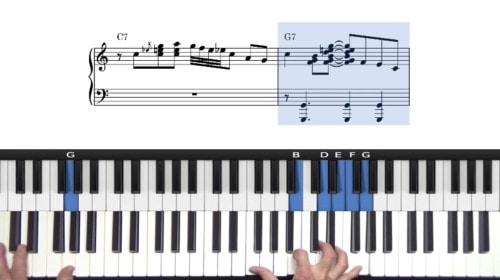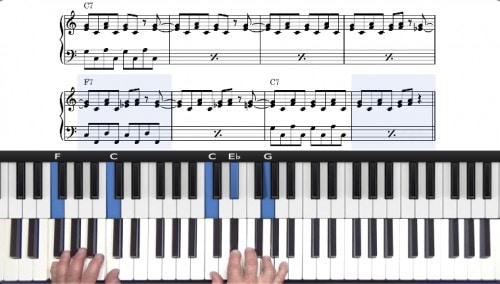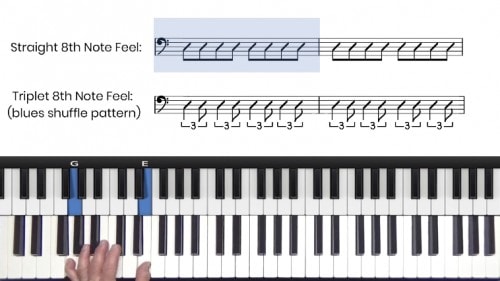New Orleans Blues Style & Technique
In this lesson we will explore the style, technique, and form of New Orleans Blues Piano.
Elsewhere in the world, the blues is generally heard in the 12 bar format. In New Orleans the blues is most often played in the 8 bar form.
12 Bar Blues vs 8 Bar Blues
Jon demonstrates the 12 bar blues and the 8 bar blues and we discuss the differences between these 2 formats.
The 12 bar blues is most commonly associated with the Chicago Blues. This style is often driven by electric guitars and played in the guitar keys.
The 8 bar blues is shorter and the way that the tensions and release work is subtly different to the 12 bar format. The 8 bar can be played with a funkier approach to the rhythm and more of a major feel to the melodies and harmonies.
Liberal Use Of The Sustain Pedal
The New Orleans Blues is often played with liberal use of the sustain pedal to create a sleepy and dreamy vibe. There is often a lot more detail, decoration, and ornamentation in the New Orleans blues, both in the melodies and through passing chords.
Passing Chords & Reharmonisations
We can use passing chords to smoothly connect the chord changes in the blues. Dominant 7th chords build a half step above or below the target chord are effective for passing chord harmony.
Lesson Downloads
-
Blues Forms & Passing Chords File Type: pdf
-
Blues Voicings & Reharmonisation File Type: pdf
-
12 Bar Blues Transcription File Type: pdf
-
8 Bar Blues In C – Audio File File Type: mp3
-
8 Bar Blues In C – Midi File File Type: midi
-
12 Bar Blues In C – Audio File File Type: mp3
-
12 Bar Blues In C – Midi File File Type: midi
-
12 Bar Blues in C in 12/8 – Audio File Type: mp3
-
12 Bar Blues in C in 12/8 – Midi File Type: midi
Practice Tips
-
We cam use the sustain pedal liberally when playing the New Orleans Blues. Pedal over grace notes and slurs to create interesting tones hanging above the harmony.
-
Be careful not to leave the sustain pedal on too long and ensure to use the pedal judiciously.
-
Experiment with more detail and decoration over the New Orleans Blues than you would with other styles of blues.
-
Right hand melodic ornamentation and lots of passing chords are commonly heard in the style.
-
Utilise the 10th interval in your left and to 'set a playground' for right hand improvisation and melodic development.
-
Double the bass note in the left hand to create a stronger sound.
-
Sometimes we can play full chords in the left hand using spread voicings and incorporating wider intervals such as 10ths.
-
Experiment with passing chords to slide into the chord changes in the blues as per Jon's examples in the lesson.










This section is so beautiful! My husband and I just poured some coffee and sat on the couch listening for the sheer pleasure of it – everything is so enjoyable – how the details in the blues are like the details on the balconies – it just brings us right back to a leisurely stroll down Royal St in the French Quarter!
Jon’s depth of knowledge of New Orleans music is unbelievable! It’s so rich!
Hi Megan 👋🏻
Yes I also think that’s a wonderful analogy to compare the New Orleans piano style to the ornate and decorative balconies on Royal Street.
Cheers!
Hayden